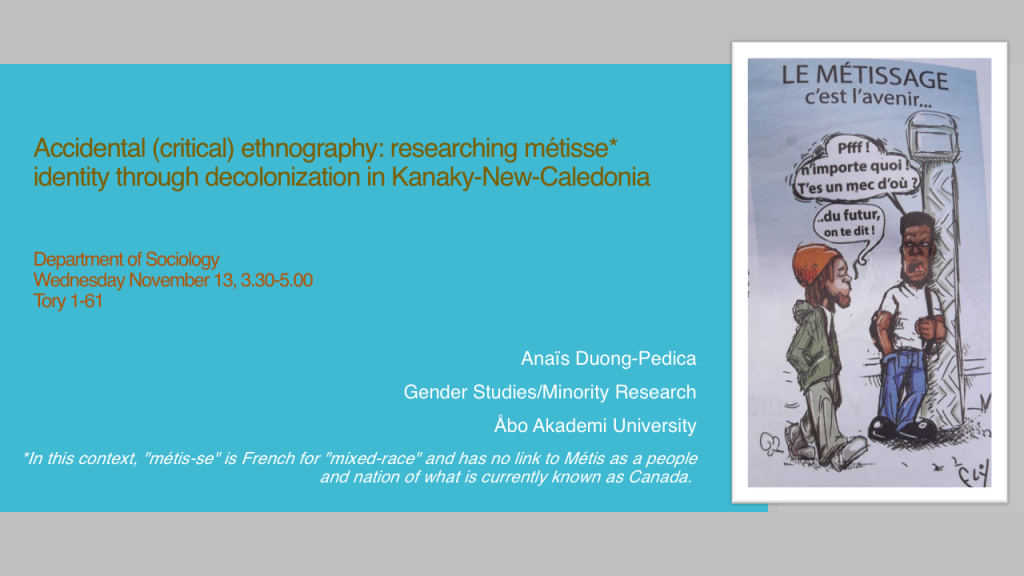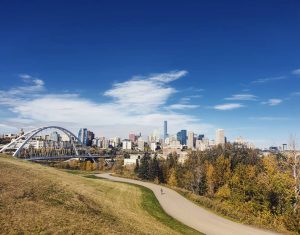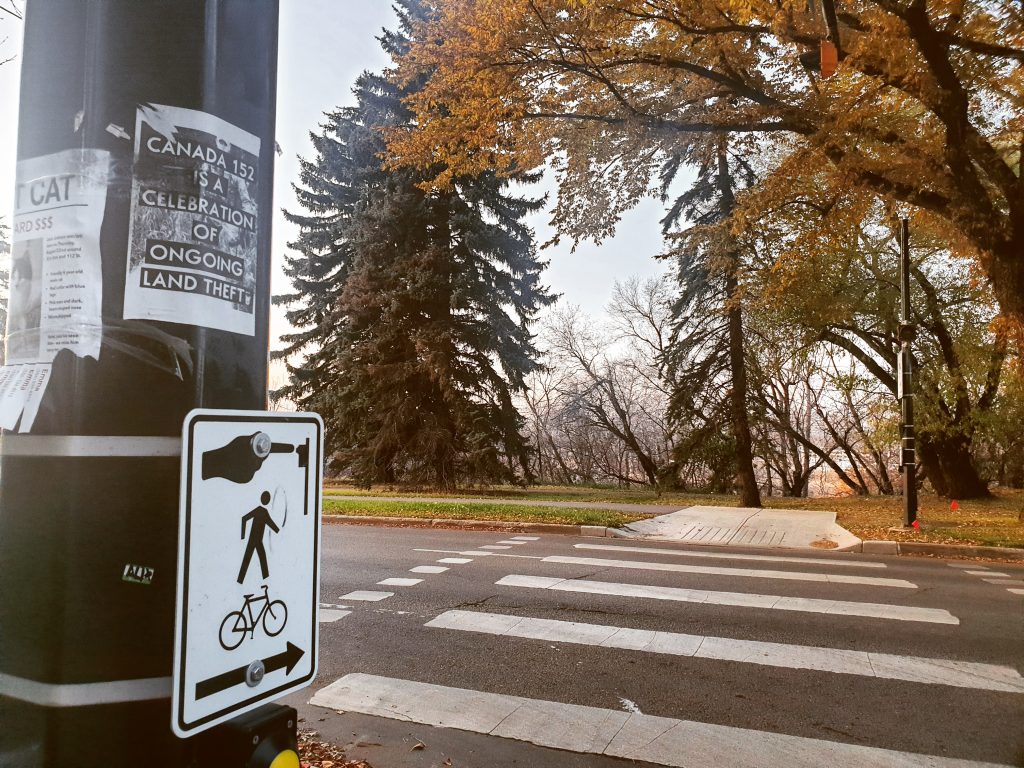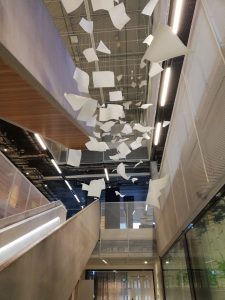Kategoriarkiv: Lärar-, personal- och forskarutbyte/Staff and research mobility
The life-changing 6 months
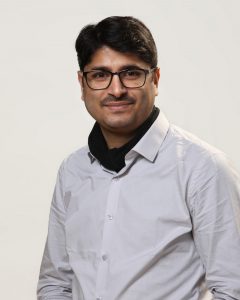 During my Master’s studies, I come to know about the role of telomerase in cancer and aging. The topic had a deep impact on my mind and, thus, I decided to increase my knowledge in telomerase biology. I approached the Savitribai Phule Pune University. The research grant offered by the University was the first step of my research carrier. This seed funding strongly increased my understanding about the guanine quadruplex formation, and how targeting this structure could inhibit the cancer progression. Eventually, the topic become my PhD research work where I used structure-based drug design approach for selecting the inhibitors and spend time synthesizing porphyrin derivatives. I defended my thesis successfully in 2018.
During my Master’s studies, I come to know about the role of telomerase in cancer and aging. The topic had a deep impact on my mind and, thus, I decided to increase my knowledge in telomerase biology. I approached the Savitribai Phule Pune University. The research grant offered by the University was the first step of my research carrier. This seed funding strongly increased my understanding about the guanine quadruplex formation, and how targeting this structure could inhibit the cancer progression. Eventually, the topic become my PhD research work where I used structure-based drug design approach for selecting the inhibitors and spend time synthesizing porphyrin derivatives. I defended my thesis successfully in 2018.
During this project, I learned that the field of telomerase is still unexplored and is more challenging than what I thought before. Hence, I decided to go further with telomerase. But this time I wanted to understand more about the structure and function of telomerase apart from inhibiting this enzyme. You will be amazed to know that the expression of telomerase is highly, highly regulated and that there is a large number of post-translational modifications this unique enzyme undergoes. Maybe that’s why someone called telomerase the Elixir of Life.
I contacted Prof. Outi Salo-Ahen in the Pharmaceutical Sciences Laboratory (PSL) and Structural Bioinformatics Laboratory (SBL) at the Åbo Akademi University and expressed my interest in continuing the research path. I was excited when she picked my interest and gave me the chance to explore the field.
Finland is very respected country in India. Location of the Åbo Akademi University is also unique, the oldest town in the country in the Varsinais-Suomi (Essential Finland) region. I would like to mention that I had a very smooth process in getting the hosting agreement and other documents on time for applying the residential permit. I appreciate the help I received from the personnel at the Åbo Akademi Research Services and my Professor.
The newly developed Finnish Immigration Service (Migri) portal for making the residence permit application is also very straightforward and I appreciate the efforts put by the Migri workers.
Moving with the whole family is always challenging and it was a big task to get proper accommodation. I would like to give credit to the Turku Student Village Foundation (TYS) office workers. They are working hard to find proper accommodation for researchers like us. I got both the housing offer and residence permit well advance to book my flight before my planned date to come here. Moving from known to unknown is always mysterious and challenging but the aspiration to achieve a new horizon was so high that these things hardly bothered me when I landed here.
First day in Turku was amazing and confusing, too…In my home region in India we have constant day times but here in September the sun was still high in the sky at 8.00 pm. At home in India we can easily guess the time of the day just by looking into the sky, but here was different. Then a thought came in my mind, “Is this the reason why clocks are always hanging in big towers all over the Europe???”
I will always cherish the first day at PSL and SBL, Biocity where I interacted with my Professor and got formally introduced to all. The whole day went in excitement and completing all the formal paper work that was fortunately quite simple and straightforward.
From the next day onwards, I started working on the project where my task was to understand human telomerase reverse transcriptase protein (hTERT). Computational facilities as well as the X-ray crystallization lab of SBL are at the state-of-the-art. Thanks to Prof. Mark Johnson and Adjunct Prof. Tiina Salminen for making these facilities available for us. As the focus of my work was to apply bioinformatics methods and carry out homology modeling, I was also given the access to the computational resources at SBL. SBL is part of the Turku node of the Finnish Instruct National Affiliate Centre (TURKU Instruct-NAC) that provides a platform to facilitate protein structure studies and bioinformatics analysis and collaborates with the Finnish IT Centre for Science, CSC. Through CSC I got experience in working with world-class supercomputers such as Taito and Puhti. I also learned to carry out molecular dynamics simulations with all the state-of-the-art molecular dynamics platforms (Amber, Gromacs, Desmond) to strengthen my understanding in the topic. I was able to successfully complete my bioinformatics studies and molecular dynamics simulation of hTERT homology models.
Since my Professor’s group is part of both PSL and SBL, I was also part of both of these research laboratories. Prof. Jessica Rosenholm who leads the nanomedicine group at PSL helped me attend the NORDIC POP (https://nordicpop.ku.dk) workshops at the University of Oslo, Norway and Uppsala University, Sweden. Both visits increased my knowledge and understanding of my research topic and other related topics. I also witnessed the Scandinavian geography and culture for first time in my life.
I was always amazed by the existing co-operation between the Åbo Akademi University and the University of Turku. Due to this I was able to attend many common seminars and workshops, particularly the CompLifeSci seminars (https://www.biocity.turku.fi/research-programmes/computational-and-molecular-methodologies-for-life-sciences-complifesci/) and Frontiers of Science seminars (https://www.biocity.turku.fi/biocityevents/frontiers-of-science-seminars/) in Biocity, which deeply impacted my understanding of various advanced emerging techniques in the field of my research.
Truly speaking, this six-month mobility gave me lot. It became the platform from where my aspiration to do research got new thrust and boost!
Att pröva på en annan arbetsplats
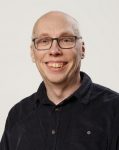 Från november till februari jobbade jag 20 % av min arbetstid vid Åbo Underrättelser, inom ramen för ÅA:s personalrörlighetsprogram. Mitt ordinarie arbete är som akademilektor i sociologi vid FSE. Tanken var nu att få vidga vyerna och pröva något annat i lagom proportioner.
Från november till februari jobbade jag 20 % av min arbetstid vid Åbo Underrättelser, inom ramen för ÅA:s personalrörlighetsprogram. Mitt ordinarie arbete är som akademilektor i sociologi vid FSE. Tanken var nu att få vidga vyerna och pröva något annat i lagom proportioner.
Jag citerar hela motiveringen till utbytet som den formulerats i den plan som skrevs under av alla parter:
”Syftet är att få insyn i arbetet på ÅU och lära känna organisationen och verksamheten. Utbytet inkluderar reportage och nyhetsuppdrag, kolumner och recensioner, samt uppgifter relaterade till Hägers specialkunnande, bland annat inom kultursociologi och religionssociologi. Utbytet förväntas ge Häger breddad kompetens i skrivande, i olika typer av texter och för en bredare publik. Erfarenheterna från utbytet kan ge impulser till både undervisning och forskning, till exempel i form av aktuella och konkreta exempel för den del av undervisningen som direkt handlar om medier. Utbytet erbjuder både Häger och ÅA tillfälle att skapa nätverk till en central aktör i det lokala samhället. Eftersom lokaltidningen är en central bevakare av ÅA i media kan utbytet också innebära nya perspektiv på universitetsarbetet för tidningen.”
Till den del det går att bedöma i detta skede uppfylldes syftet rätt väl. Jag skrev några texter med ganska tydlig koppling till mina forskningsintressen och till min roll som akademiker. Sen blev det också en del annat som var mer främmande för mina intressen. Det blev en ganska bra balans mellan att utnyttja mina specialkunskaper och att själv lära mig något nytt om det journalistiska arbetet.
Arbetet organiserades alltså så att jag jobbade deltid, i princip en dag i veckan, under de fyra månader utbytet gällde. Det alternerade mellan måndag och fredag, för att mindre störa min undervisning – men jag fick gå tidigare några måndagar för att komma och agera lärare i ASA-huset – och för att få se eventuella skillnader mellan början och slutet på ÅU:s arbetsvecka. Det blev ganska snabbt klart att arbetsrytmen gjorde det mycket svårare att komma in både i uppgifterna och i arbetsmiljön. Den innebar också en del ”övertid”, med både intervjuer och skrivande på annan tid än mina egentliga ÅU-dagar. En arbetsvecka i sträck vid tre olika tillfällen hade blivit ungefär lika mycket arbetstid och troligen ett mer givande sätt att lägga upp vistelsen vid ÅU – även om det hade krävt lite mer justering av schemat för det ordinarie arbetet.
Det var många år sedan jag senast var på en ny arbetsplats, och det var en på många sätt givande erfarenhet att få lite omväxling. Det var också tveklöst alldeles rätt val av arbetsplats för min del. Jag är tacksam både till ÅA och ÅU för denna möjlighet och rekommenderar för alla vid ÅA:s personal som har möjligheten till denna form av mobilitet att utnyttja den.
From Morocco to Finland – An international research exchange
Since August 2019, I have been here at Åbo Akademi University on the Research mobility programme. My name is Maryam El Hajam and I am a researcher from Sidi Mohamed Ben Abdelah University, Morocco. The research project proposed for this visit falls in scope with the activities of Molecular Process and Material Technology. This profile area focuses on chemical engineering and material aspects in the bio-economy, which is connected to the advanced utilization of nature-based compounds in this internationally recognized area of research. Our work combines biomass and inorganic material chemistry, which is in agreement with the goals of this profile area that aim to shift from technologies and products based on fossil sources to novel alternatives built on renewable resources. Therefore, the use of wood residues to produces novel nanocomposites and nanostructured ceramics is not only local but as well, global interest, and it can also be valuable to the finish forest industry. This visit is well fitted with the approach of Molecular Process and Material Technology, which is mainly applied to molecules originating from biomass.
I perfectly know that this opportunity constitutes an advantage on my resume. This visit presents an unprecedented opportunity for any researcher in the world and, more precisely, the Moroccan ones in the field of molecular process and material technology, in search of a unique experience that will strengthen their theoretical achievements and scientific research. This visit allowed me to work and collaborate with a leadership team in the field of wood materials in Finland. Through this visit, I could further my research in this area using different new methods and sophisticated instruments. The impressive reputation of Åbo Akademi University and the quality of supervision of the staff in the Laboratory of Wood and Paper Chemistry allowed me to learn many things such as research methodology, group work, problems resolution, and stress management, which will enable me to integrate the professional life more easily in the future.
International Mobility and Partnership
International partnerships are exceedingly valuable. The key benefit of the two universities partnership related to my visit is collaborative research, which builds capacity in research team members, research staff, and me as a student working on research projects. Through this visit, joint research has allowed maximizing scarce resources more effectively and facilitate greater generalizability of results.
Research mobility presents an integral part of research at ÅA. It is like a windows trough it the university can broaden new relations and collaboration either in hosting or sending researchers. It allows us to foster cross-disciplinary research within Åbo Akademi and to bring together researchers from different countries to learn about the ongoing research activities and to spark new ideas for new international collaborations in the future.
One in five of the world’s scientific papers is co-authored internationally. Because of the expansion of communication methods and the ease of international travel, academics and researchers are finding it easier than ever to collaborate with their foreign counterparts, making the exchange of academic ideas much simpler to organize.
The ability to scrutinize, debate, and share experience are essential for academic and scientific accomplishment. Constructively challenging accepted opinions and ideas is central to their development, and international collaborations through such mobility help to facilitate this.
Åbo Akademi’s institutional strategy is built on internationalization. The main emphasis is on mobility-related actions. For this reason, Åbo Akademi University encourages students and staff to be internationally mobile and appreciates international experience in recruitment.
Living abroad – a complex experience
For me, to live and work in another country was and still is an excellent and exciting adventure. This is my second experience abroad, and I have appreciated it. I have always heard from friends and some of the family members who have lived in other countries that it was hard for them. Whenever we met, they did not end with complaints about the hardness of living there. Fortunately, their claims did not affect my thoughts. On the other side, it made me yearn to live this experience according to my personality and perspectives. Therefore, to make your visit successful, it is your own choice and challenge. It is not so hard, but it needs self-preparation, enthusiasm, and a great curiosity; you should establish your world in another place based on a foreign culture and new people. According to that, you will be able to take advantage and benefit as much as possible of what is available to you, because this opportunity is not given to everyone. This kind of experience allowed us to be independent, responsible, and especially it can teach us a lot about personal and professional life, how to deal with people in work and outside. In this case, you can know well who you are and what you want. I want to thank “Åbo Akademi University Research Mobility” for the chance that it gave me, because of this program.
This visit makes me much more self-reflective. It strengthens my ability to confront changing environments, and it helps me get to know myself better. I face challenges I have never encountered before. Therefore, this kind of visit helps us to see who we are through the differences and similarities we observe within other cultures and through several situations. It is a real chance for personal growth; it is a study into who you are and what you want. The good thing is, going on this journey does not just help you see these new aspects of yourself, but it also gives you the power to both face changes, and make changes.
When you go to another country, there is usually no other way to communicate than in a language different from your own. You have to use languages that you may not have fully mastered. However, practice makes perfect and improves proficiency. What is more, I do not just improve the languages I already know, I often start learning a new one!
Going abroad for a semester or two is usually linked to an increase in qualities, which employers are looking for. It means you are open to new experiences, you can be independent, and you have at least some intercultural sensitivity (and that last one is especially valuable to international companies). Therefore, it was a personal experiment without any doubt very enriching.
Advise for other researchers interested in an international experience
I advise every person who wants to apply to this program to focus on a good research project with international interest to increase his/her chance to be accepted. The research project should fall in scope with the activities of the laboratory and the area that you will choose in the application. You should be aware of the existence of the entire instrument you need for your project in the host laboratory and all the facilities that can offer to you during your visit. The most important thing that I can give as advice is to make sure that the proposed project can be done during the stay period; if not, please make it shorter according to the time that will be offered to you to accomplish your work.
I strongly encourage others to take part in this research mobility program because it is an outstanding experience. I´m confident that they will like it and they will learn a lot through it. This experience will be an advantage for their resumes like a professional purpose and their personal life also. For every person like me, who has been prevented by material conditions from traveling abroad for study, research, or tourism, I say this is an excellent opportunity to achieve your dream. The program will offer you a scholarship that will allow you to live in this country and travel around, and maybe it will be a step for another next collaboration. So, apply for this program and take part in it, don’t waste your opportunity. For interested incoming researchers do not forget, experiencing a sauna is necessary for any visit to Finland!
Learning & researching on the move
Thanks to the ÅAU Research Mobility Grant, I had the opportunity to be a visiting PhD student in the Department of Sociology at the University of Alberta in Edmonton on Treat 6 Territory, in what is currently known as Canada, between September and December 2019. Being the home of many Indigenous communities, including the Cree, Saulteaux, Nakota Sioux, Blackfoot and the Métis Nation, Edmonton’s traditional name is Amiskwaciy Waskahikan in Nehiyawak (Cree). My main goal there was to work with one of my supervisors, Prof. Shirley Anne Tate, on my research on ‘mixed-race’ identity in Kanaky-New-Caledonia (KNC). As a PhD in the Minority Research profile, the visit allowed me to further explore the ways in which global systems of domination work together to oppress, exclude and disappear Black and Indigenous peoples. As a researcher, I was able to attend a variety of events organized by staff and students at the University of Alberta, such as events organized for the International Year of Indigenous Languages and the Working the Intersections of Gender conference.
I was fortunate to be able to audit two classes at the university: Studies in Indigenous Theatre, Performance and Politics with Dr Selena Couture, and Colonialism, Postcolonialism and Globalization with Prof Shirley Anne Tate, as well as take a free online class hosted by the Faculty of Native Studies: Indigenous Canada. This allowed me to make links between the issues faced by Indigenous nations in Canada but also the legacy of slavery and ongoing anti-blackness in the Transatlantic region and elsewhere around the globe, with the continuing colonialism and racism predominantly experienced by kanak in Kanaky-New-Caledonia. I also paid attention to the ways in which people resisted settler colonialism within and outside the institution and attempted to make links with settler-Indigenous relations in the Pacific and the struggle for sovereignty in KNC. One such ways is the PÎTOS-MÂMITONEYIHTAMOWIN (REIMAGINE) UALBERTA website which was created “to highlight Indigenous, or perceived Indigenous places, spaces & art located on the University of Alberta North Campus. The website is home to a hub of alternative perspectives around Indigenous or perceived Indigenous statutes, artwork, places & spaces at the University of Alberta”.

At the ᐄᓃᐤ (ÎNÎW) River Lot 11∞ (click on the link to read a guide written by Mackenzie Brown on Exploring Indigenous Edmonton) Preparing to Cross the Sacred River by Marrianne Nicolson

At the ᐄᓃᐤ (ÎNÎW) River Lot 11∞ Isoktew by Amy Malbeuf
Taking courses was beneficial to my research as auditing a course in the Department of Drama encouraged me to engage with critical work and artistic practices outside of my study area and explore my research topic from a variety of standpoints. In fact, reading Indigenous playwrights and critical pieces on Indigenous theatre and performance on a weekly basis inspired me to write one of the papers for the PhD on the politics of ‘mixed-race’ identity in Jenny Briffa’s “Fin Mal Barrés !”, a local play on independence/referendum politics. It was also beneficial to my teaching practice as it enabled me to observe different pedagogical methods and learn collectively with other postgraduate students and teachers. As a teacher, I appreciated seminars like ”Approaches to the Inclusive Classroom” and the ability to discuss how we can change our practices as teachers in order to facilitate disability justice, anti-racism, anti-colonialism and feminism in the classrooom. As a PhD student, I was happy that ”Writing Bootcamps” were organised by the Faculty of Graduate Studies, which provided us with a booked room, writing tips and food and beverages throughout the day to allow us to focus on writing.
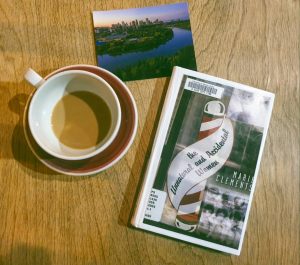
Marie Clements’s play ”The Unnatural and Accidental Women” which we read and saw live as part of the course in Indigenous theatre
The University of Alberta has around 40,000 students and employs more than 14,400 people. Contrastingly, about 5,500 students are registered at Åbo Akademi and the university has about 1,100 employees. This has an impact on the resources allocated to research and the variety of research fields and programmes offered at both universities. Indeed, the University of Alberta library had access to a significant amount material in my fields of interest. Thanks to having access to many journals and books, I was able to read and collect material that I will be using in future articles.
During my stay, I also had the opportunity to present a methods paper in one of the Department of Sociology’s seminars entitled “Accidental (Critical) Ethnography: Doing research on métis-se identity at a time of decolonization in Kanaky-New-Caledonia”. This was a good occasion to share my research process and project, raise awareness on the political stakes in KNC and get feedback on the research.
From a personal perspective, I enjoyed being in a larger city (Edmonton is about 5 times bigger than Turku and 1.5 times bigger than Helsinki!) where events were happening on a weekly basis. I went to public readings, standups, art exhibitions, screenings… I had also missed independent (secondhand) bookshops that sell anglophone or francophone literature and came back with suitcases mostly full of books. If Edmonton happened to be much colder than Turku at the beginning of winter, the beautiful Saskatchewan river divides the city in two, much like the Aura does Turku – although, again, there was quite a size difference! While most of my time was spent in the university library or in cafés reading and writing, I managed to make a bus trip to Calgary where I met a friend who drove us to Banff National Park. There, we saw a frozen Ho-Run-Num-Nay (“Lake of the Little Fishes” in Stoney Natoka) also known as “Lake Louise”. I was thankful for the opportunity to see these beautiful landscapes before flying back to Europe.

Screening of Tasha Hubart’s documentary ”nîpawistamâsowin: We Will Stand Up” on the racism of the Canadian justice system and Colten Boushie’s family’s fight for justice, at Garneau Theatre.
Research mobility is an important part of my research as the focus of my study is the Pacific and I am based in Finland. Being able to share your approaches, ideas, process with other scholars and students and to learn from their own research and teaching practice is a real advantage in research. Therefore, research mobility should be accessible to all at ÅAU. As a PhD candidate, I am very aware that accessing this grant was only possible because I am one of the few salaried postgraduate students. Many colleagues do not have this opportunity because they are unsalaried.
The Mobility Grant is a wonderful opportunity to meet scholars in other parts of the world and to be able to make transnational connections. My advice for future applicants would be to pick a university and department(s) that are dynamic in their various fields of interest but that are also lively outside of the university. In my case, the city was very rich in cultural and political events. Also, I would encourage everyone to take the opportunity to learn from other scholars in seminars but also courses offered by the university (even if one is no longer a student!).
På resa med kanslers guldkant
Av: Maria Nyman och Kati Palmberg, kommunikationslärare vid Språkcentret
Tack vare ett resestipendium utfärdat av tidigare kansler Ulrika Wolff-Knuts hade vi i oktober möjlighet att besöka Stockholms och Uppsala universitet, för att bekanta oss med språkverkstäderna vid lärosätena. Kanslers initiativ att möjliggöra studieresor för undervisande personal värmer; som universitetslärare vid Åbo Akademi upplever vi det naturligtvis positivt att universitetet vid sidan av forskningen också vill utveckla undervisningen och stödet till universitetets viktigaste resurs, de studerande.
En viktig del av vårt arbete är att handleda studerande i deras skrivande. De studerande behöver hjälp med olika saker, som att komma till rätta med det akademiska skrivandet i kontrast mot de texter de har skrivit före studierna, att bemästra svenskan som andraspråk eller ibland helt enkelt med att åstadkomma en koherent text. Vår handledning i huvudsak gällt avhandlingar på kandidat- och magisternivå. En del av det arbetet sker inom ramen för de obligatoriska kurserna i kommunikation, men studerande söker sig också till oss utanför kurserna för att få respons och hjälp. Många utnyttjar till exempel möjligheten att boka tid för skrivhandledning då de bearbetar sina texter. Eftersom vi upplever att många studerande behöver hjälp i sitt skrivande redan tidigare i studierna erbjuder Språkcentret sedan hösten 2019 en drop in-mottagning i Arken G 108, Textverkstaden, som är öppen varje onsdag vid lunch (12.00–13.00).
För att få möjlighet att utbyta tankar med kolleger och få idéer för att utveckla Textverkstaden ville vi besöka svenska språkverkstäder med delvis samma typ av verksamhet som vi har. Både Stockholms universitet och Uppsala universitet har välfungerande språkverkstäder, men samtidigt skiljer sig deras profiler från varandra. Genom att besöka dem båda fick vi en mer mångfacetterad inblick än om vi endast skulle ha mött kollegor vid ett universitet.
I Stockholm fick vi följa med både handledningssamtal med studerande och föreläsningar, och framför allt fick vi möjlighet att diskutera och lära oss av våra gästfria värdar. Vid Stockholms universitet riktar sig mycket av verksamheten mot studievägledning och studieteknik, vilket var nytt för oss. Inriktningen återspeglas också i enhetens namn – Studie- och språkverkstaden. De studerande erbjuds enskild handledning, workshoppar, föreläsningar och skrivargrupper. Utöver det har Studie- och språkverkstaden också drop in-mottagning varje vecka. Frågorna som väcks i handledningssituationerna visade sig delvis vara de samma som hos oss, även om en påtaglig skillnad som påverkar är heterogeniteten och mängden andraspråkstalare bland de studerande i Stockholm. Många behöver stöd för sin svenska, speciellt i början av sina studier.
Språkverkstaden vid Uppsala universitet hör i motsats till Studie- och språkverkstaden vid Stockholms universitet till en institution, Institutionen för nordiska språk. Fokus ligger där också mer på språkbehandlingen i texter, men studerande erbjuds också möjlighet att boka handledning för muntliga uppgifter som presentationer, även om det i praktiken är rätt ovanligt. Vi fick följa med individuella skrivhandledningar och förde också givande diskussioner med värdarna om de institutionella förutsättningarna för verksamheten, om vilka arbetssätt och arbetsbilder vi har vid respektive universitet, och om vilka de studerandes behov är. Diskussionerna berörde också läs- och skrivsvårigheter, som är en av våra uppsaliensiska värdars expertisområde.
Vi beslutade redan i ett tidigt skede av planeringen inför resan att vi också ville passa på att träffa svenska forskare på relevanta områden. Till vår glädje fick vi möjlighet att diskutera med inte bara våra värdar vid språkverkstäderna, utan också både Jeanna Wennerberg vid Institutionen för svenska och flerspråkighet i Stockholm och Andreas Nord vid Uppsala universitet. Wennerberg är specialiserad på studerandes läs- och skrivfärdigheter och gav oss många insikter. Bland annat fick vi upp ögonen för i vilken utsträckning läsförståelsen kan påverka skrivandet. Med Nord fick vi möjlighet att reflektera över arbetslivsrelevansen i studierna och problematiken kring hur vi som lärare kan arbeta med arbetslivskommunikation.
Väl hemma igen är det dags att packa upp våra mentala resväskor – vad fick vi med oss? Mycket. Vi inspirerades av skrivargrupperna i Stockholm, att sitta ner i grupp och arbeta tillsammans och samtidigt på en text som en gruppmedlem skrivit. Vi fick bekräftelse på att vi behöver nå ut till de studerande i ett tidigare skede i deras studier. Vi fick upp ögonen för vikten av att synliggöra grunderna för verksamheten och föra en intern dialog kring vilken bild vi vill förmedla. Vi imponerades av de välstrukturerade arbetssätten hos kollegorna i samband med individuella handledningar, och hämtade med oss impulser som berikar vårt arbete. Vi har blivit stärkta i tron på att det vi gör är rätt, men att vi kan göra det ännu bättre. Godiset vi köpte med hem till våra kollegor är slut, men de här karamellerna suger vi på ännu länge.



























